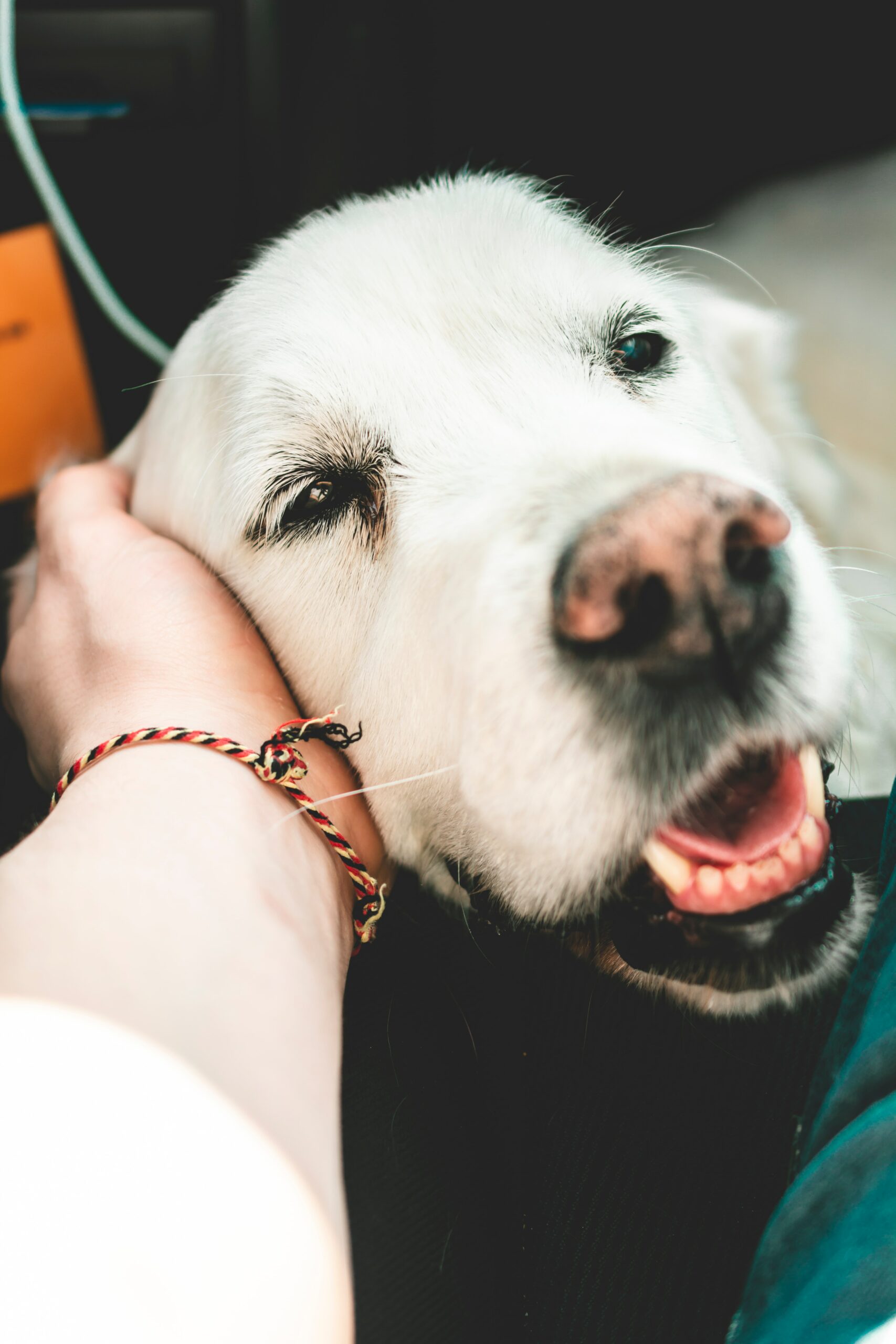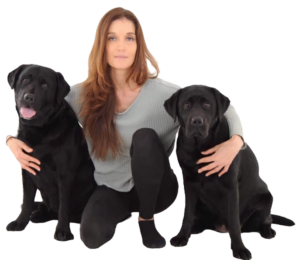Pets and Their People Blog
Pets & Us – Seeing the Positive in Challenging Situations
This is a very personal article for me. I sat in the garden the other day watching Shadow (one of our family dogs, not specifically my own and his identity protected for the purposes of this article) and thought, “What we are doing here?” and, “What I am thinking because of this situation may help others in an unfortunate and similar position.” Bounce forwards a week or so and I thought, “Hey, you have this article!”
I want to say at the very outset that this is meant so much to be a positive piece. So very often we talk about animals in ‘old age’ with a negative vibe, ‘nearing the end of their lives’ or ‘he or she is just old’. And fulfilling activities just don’t happen with these animals anymore simply because they are of a certain age. You know, that really gets to me. It makes me sad to look at these animals who have given so much – they have so much more to give regardless of their compromised abilities.
My view is that we should still be thinking positively – for them. Let’s think about animals enjoying their dotage, living with, not suffering from specific conditions and helping them as best we can. I have always had a specific interest both in puppy development and enriching the lives of senior dogs – polarized I know! But recently my interest in the latter has deepened even more.
A Lesson to Us All
Our family dog, Shadow, is an 11-year-old border collie. Recently his arthritis has deteriorated so much so that his hindquarters are failing him. As a typical border collie, Shadow is absolutely mentally driven and has no desire to stand still and give up; and this is what made us also continue to assist him. If he were mentally shut down, the situation would be different – and our vet is in complete agreement. So Shadow wobbles about, flops down, is determined to race down the garden (to the best of his limited ability) to retrieve his toy (and whack himself in the face with it!), promptly wobbles over again, picks himself up and the cycle repeats. He eats, can do all his ‘necessaries’ but can no longer walk his lovely long walks and requires assistance in many daily tasks and receives daily veterinary prescribed pain relief – he just gets on with life and in many ways how he copes is a lesson to us all.
Pain or Being Naughty?
I think it is worth briefly mentioning early recognition of symptoms. Pain is so readily passed over as ‘naughtiness’. I see this time and time again with clients who simply do not appreciate that their dog is experiencing chronic or acute symptoms. In Shadow’s case, he began resenting touch around his hind end. However this was tricky to determine because he has never particularly liked being touched in that area – or being brushed around the tail. The big red flag, I think in this case, was a reluctance to travel in the car. Shadow used to love being ‘bunked up in the car boot’ i.e., being lifted in after putting his front paws up. Two years ago however, he strongly disliked being lifted around his rear end and would snarl at any attempts to lift – not nastiness, not naughtiness but his way of communicating, “I am uncomfortable with this. Please help me with it.” It was at this stage that veterinary advice was sought, and pain relief commenced. Always listen to your dogs and what they are trying to communicate.
Helping Shadow – Immediate Aftermath
Watching the transition in a pet who means everything to you, from a vivacious animal to one who suddenly relies upon you 24/7, is extremely difficult emotionally. I have experienced this firsthand with horses and cats, as well as dogs, and it can be truly devastating. And no one knows that feeling unless they are a pet owner. In the immediate aftermath of your pet being unwell or being diagnosed with a particular condition, give yourself some time to digest the news but try not to sink into a deep, dark hole. Arm yourself with knowledge. We are so lucky to be able to have instant access to a wealth of information nowadays, so use it to your advantage to find out as much as you can about your pet’s condition and treatment options, or join support groups where you can share information with others.

Try to be positive around your pet. I have always found that my pets mirror my emotions – if I’m sad or glum, so are they – and in fact, I find myself internalizing how my pets feel too. No matter how you really feel, try to act jolly and upbeat. This certainly helps encourage Shadow. On days where walking is difficult and he will stoically ‘plant’ himself and not want to walk, a much more positive, jovial attitude will encourage him forwards.
There will be times of course where the situation just feels overwhelming – it’s OK! It’s just because you care; if you didn’t, you wouldn’t feel that way! Dogs in particular are sensitive to human emotions and stress (Sanford et al, 2018) so I’ve always tried to not be around any pets when I’m crying for them – although sometimes from an entirely selfish point of view, you just need a furry cuddle! Largely though, I do find that it helps to be upbeat. Smile a lot, even if you don’t want to, and try to have a happy tone of voice – certainly, at the moment, it’s something Shadow responds positively to with a waggy tail on those tougher days.
Adaptations
Last year, Shadow used to enjoy some lovely long off-lead runs and would flit and fly around the house and garden as he pleased. Sadly, today he is unable to do these fun activities and emotionally he is frustrated because of it. Mentally the will is there but physically he cannot keep up. We have had to make quite significant environmental adaptations to safeguard his well-being. The first major change was to fit Shadow with a mobility harness. Shadow wears this body harness all day so that he can be walked safely and his hindquarters can be steadied should he wobble and potentially fall. In the event Shadow does wobble over, he finds it difficult to pick himself up because he is a large dog, so the harness does a great job of assisting with the task.
We have also had to place nonslip rugs over hard floors, as Shadow was completely unable to walk on these anymore without sliding over, and also to place rubber mats under his food bowls so that they did not slip away from him as he ate. We have also added stair gates in case he attempted to climb and subsequently fell down, which was a distinct possibility.
Unfortunately, due to Shadow spending a lot of the time now recumbent, this has led to additional issues like elbow sores and similar sores on his hind legs. His bed has now been changed for a very thick orthopedic foam bed and he also sometimes wears elbow protector pads to protect the joints when the sores are a little rough – poor guy has it all going on! We have fitted some ramps around the premises too where there are steps that are difficult to navigate.
Shadow’s waistline, of course, has expanded a little somewhat due to the decreased exercise, so we have had to alter his food. We have found that some of the items he used to love, now do not really agree with him, as his dietary needs/requirements have changed a little and he cannot tolerate some food stuffs.
All in all, patience is key here – big changes have to be made.
Animals become slower and may have ‘accidents’; your routine is no longer the same; your animal is much more demanding of your time – you are in fact now ‘a carer’. Shadow has developed some behavioral issues. He is much more clingy and now does bark if he is left alone. Truth is, it is hard work caring for an animal who has additional needs.
Behavioral Changes
I mentioned briefly above that Shadow has developed a mild behavioral issue. Behavioral changes in older animals are certainly not uncommon and pretty often accompany degenerative medical conditions. Remember that the animal may no longer be able to hear, see, touch or smell as well as he or she did. Certainly, Shadow cannot hear quite as well and is easily startled and will growl or snarl if this is the case (it is always our fault). We do all try to speak first before approaching but Shadow has a habit of lying behind a door and sometimes we do not see him.
We must also recognize that health conditions may make dogs ‘snippy’ because they are in pain or because they are frustrated, aggravated, irritated, itchy, etc. and so we must therefore pre-plan and educate children not to pet them, to stay away unless accompanied, to give the dog safe spaces, to allow them relaxation and sleep space. We must also think about public safety. In our case, we know that Shadow may possibly be in pain and may snap if touched in a particular place, so we have a large blocked out gate at the entrance of our property so that no one can pet our dogs or enter, just in case. We know not to touch Shadow in ‘risky painful areas’ but, of course, people who do not know Shadow are unaware, and it is impossible to pre-plan for every eventuality, so this is the best form of safeguarding.
Enriching Lives
Shadow used to absolutely love his long country walks, playing with his doggy friends and chasing his ball; he can no longer engage in these fun activities. Along with his physical decline, this is what I found most difficult because it was so apparent that he was still desperate to take part in all of these games. So I thought, “How can I keep the fun going so that his life is just as fulfilling?”
Just because a dog is diagnosed with ‘X/Y/Z’ does not mean the end of his fun. There is always something you can do within the boundaries of his capabilities. With Shadow, I started with his favorite ball and simply rolling it. He cannot run unaided to this anymore, so I lie him down and I sit with him and we play ‘roll-a-ball’ – and he loves it – simply rolling it towards him for him to catch on the floor! I can now also have a ball on a rope walked in front of him and walk him in his body harness and this is actually very good physical therapy – walking around 10 strides or so before a rest. We also play ‘catch-a-ball’ lying down and he even enjoys having the ball rolled over him! We do a lot of physical touch, e.g. the Tellington TTouch® method and playing tactile games such as ’nose (to hand) touch’ while lying down. We also keep up some training such as ‘watch’ that we did years ago. All of this has to be done lying down as Shadow can no longer sit. If I walk Shadow, we can manage some ‘go find’ to look for a treat or two in bushes in the garden whilst supported on his body harness, or the same under a blanket when inside, and he still absolutely loves shaking his toys around!
We make sure that he has a nice blanket to sit on and can come and sit in different places outside in the sun just to watch what’s going on; he loves that. Sometimes we just go and sit and talk to him, just sitting there and calmly stroking him; hearing a reassuring voice is comforting. Other times he will go inside the house and we will play dog calming music – just lots of different experiences for him. He also has the benefit of my other younger dogs and he enjoys their company too. Essentially everything is consensual – Shadow chooses what he wants to do – play, go outside, walk back in again, have a snooze and he’s happy!
As I’ve said within this article, looking after an animal with extra needs is not ‘a walk in the park’. It is hard – very demanding of your time and it is a rocky emotional rollercoaster too.
At the outset you can feel like your world has fallen apart, but try to push past because this doesn’t have to be a negative time. For the sake of your pet, try your hardest to make it positive. Adjust your expectations, be patient and understand the situation from your pet’s point of view
– there is much you can do to make it positive, enriching and fulfilling.
Reference
Sanford, E.M, Burt, E.R, Mayors-Manor, J.E 2018. Timmy’s in the well: Empathy and prosocial helping in dogs. [Online]. [Accessed 8 November 2022]. Available From: https://link.springer.com/article/10.3758/s13420-018-0332-3
About the Author


